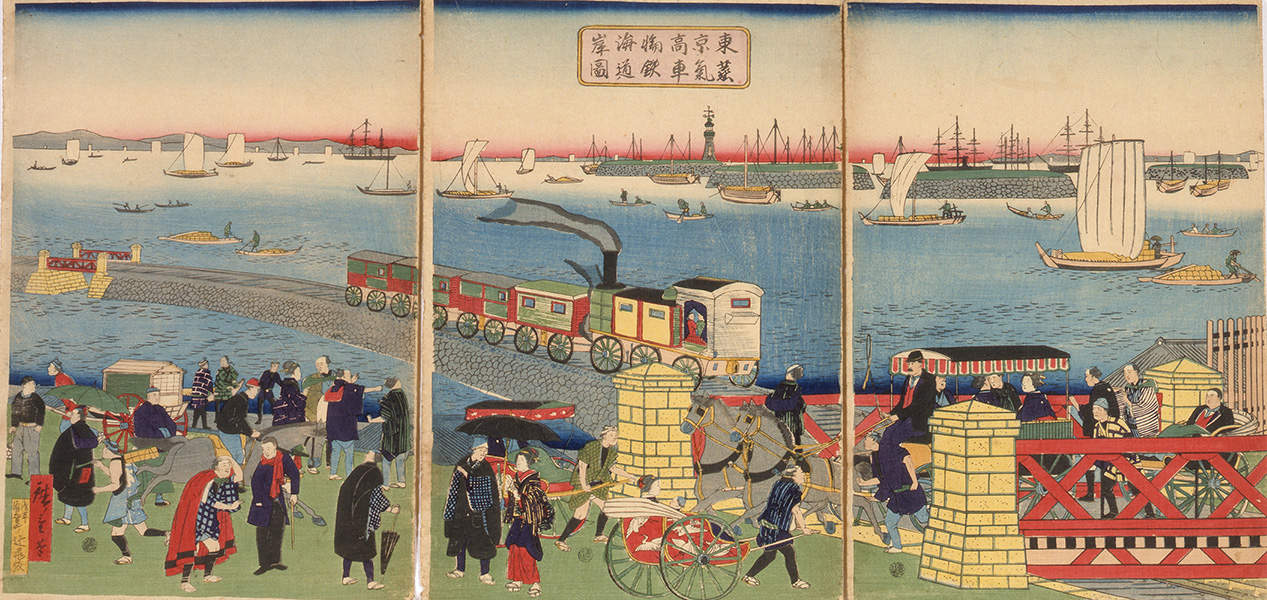The event titled, “Kagurazaka Machibutai / Oedomeguri 2017” which mixes traditional & modern styles will be held!
19.October.2017 | SPOT
“Kagurazaka Machibutai / Oedo Meguri 2017” will be held in Kagurazaka, an area where traditional styles and modern styles merge, on the 11th of November (Sat.) <eve> and the 12th (Sun.) <actual festival).
Kagurazaka is an area where the cut-out map of the Edo Period and the map of Heisei Period overlap. Many places in Tokyo changed into a modern city but Kagurazaka is a mysterious place where you can feel the history of the Edo Period. The area is popular among various generations as a town where the culture of Edo/Tokyo and sophisticated atmosphere of Paris are merged.
In this event, many top artists related to traditional arts who have some kind of connection with Kagurazaka will gather with the help of the citizens of Kagurazaka.
Many events which you can experience traditional arts such as “Shinuchi Nagashi” where people play music while walking, mini lives of traditional artists are held at preppy restaurants, cafes and live houses and “ozashiki asobi” (games with geisha) will be held.
The two-day event is a festival where you can experience Japanese traditional arts in Kagurazaka, a historical town where persons from different generations and foreigners who are not familiar with traditional arts can enjoy these arts.
Why not have an awesome weekend at Kagurazaka, a town which has the atmosphere of the Edo Period and Paris?
■Information
“Kagurazaka Machibutai / Oedo Meguri 2017”
Date: Eve / 2017,11,11 (Sat.) 15:00 to 19:40
Festival / 2017,11,12 (Sun.) 11:30 to 18:00
※The events might be canceled depending on weather conditions
Venue: Kagurazaka area (Bishamonten Zenkoku Temple, Akagi Shrine, Tokyo Kagurazaka Cooperation / streets in Kagurazaka / historical spots in Kagurazaka
Fee: free (some places require a fee or reservations)
Official website:http://kaguramachi.jp/
RELATED ENTRIES
-
Results of Second Japanese Cultural Grand Prix Announced
12.September.2022 | FASHION
The five winners of the second Japanese Traditional Culture Grand Prix have been announced! The contest was spearheaded by the Japan Traditional Culture Promotion Project, established in May 2020 as a collaborative effort among companies, associations, and local governments to establish a sustainable framework for the continued development of Japanese traditional culture.
The project is headed by Seiichi Kondou, the Former Commissioner of the Agency for Cultural Affairs. United Arrows Honorary Chairman Osamu Shigematsu serves as Vice-Chairman. Along with Nobuo Yoshida, the 14th generation head of the 400-year-old traditional paper fan store Ibasen, the Japan Cultural Promotion Project began this Grand Prix as a way to honor outstanding works of Japanese culture by companies, organizations, and individuals. Anyone can enter, regardless of nationality, residence, or age. The jury consists of 11 people from various fields, including Richard Collasse, the Chairman of Chanel LLC, and popular model Kozue Akimoto.
Grand Prix Winner

Dustpan x Broom
Luo Qi
Each dustpan is shaped by hand to match the special shape of the Matsumoto broom, which is then dyed with natural Tokushima indigo dye. The broom is the only one in the world made from home-grown broomcorn, and each is made by a third-generation craftsman with years of experience.
Runner-up Prizes

Japanese Lacquer Art – Ether
Takehito Sasaki
[Critique]
Both traditional and innovative. The spirit of Japanese culture and the meaning of this award seem to have taken shape in this work. The zippers do not open. The surface looks like leather, but it isn’t. When the lid is opened, the glossy lacquer seems to spread out. My expectations were surpassed. Anyone who sees it or uses it will find themselves lost in imagination, and I’m sure that thinking about that will bring a smile to the creator’s face. This beautiful craftsmanship was born from plenty of care and attention. What a pleasant surprise. (Risa Tanaka)

Sake Drinking Set – Japanese nagomi Sake Cups
Nagomi Fujita
[Critique]
There’s something about this piece that shares a spirit with Art Nouveau. The delicate plants superimposed on the bright transparent glass are a powerful image. In traditional Japanese nagomi art, the linear appearance of the plants is painted a bit more lightly, but these overlapping layers and shapes resonate and make an impact. The artist used traditional techniques such as lacquer and foil in a subtle manner, while still making the plants look alive. I’d consider this as a modern take on ecology. (Yuko Hasegawa)
Excellence Award

Floating Boat Counter
Masafumi Kodama (Registered Architect with a First-Class License) / Taiki Ishikawa (First Class Carpenter/Registered Architect with a Second-Class License)
[Critique]
The motif that inspired this piece is the traditional Japanese architectural technique of funahijiki. It’s an outstanding piece that utilizes practical architectural practices to create a piece of furniture at the center of a home, somewhere that the family relaxes. It brings the beauty of Japanese wood into the modern age. Funahijiki is a technique that has been used in incredible places, such as the Kyoto Imperial Palace and Kojoin Temple. It’s graceful and elegant, and not often seen in the current age. (Hidetsugu Horikoshi)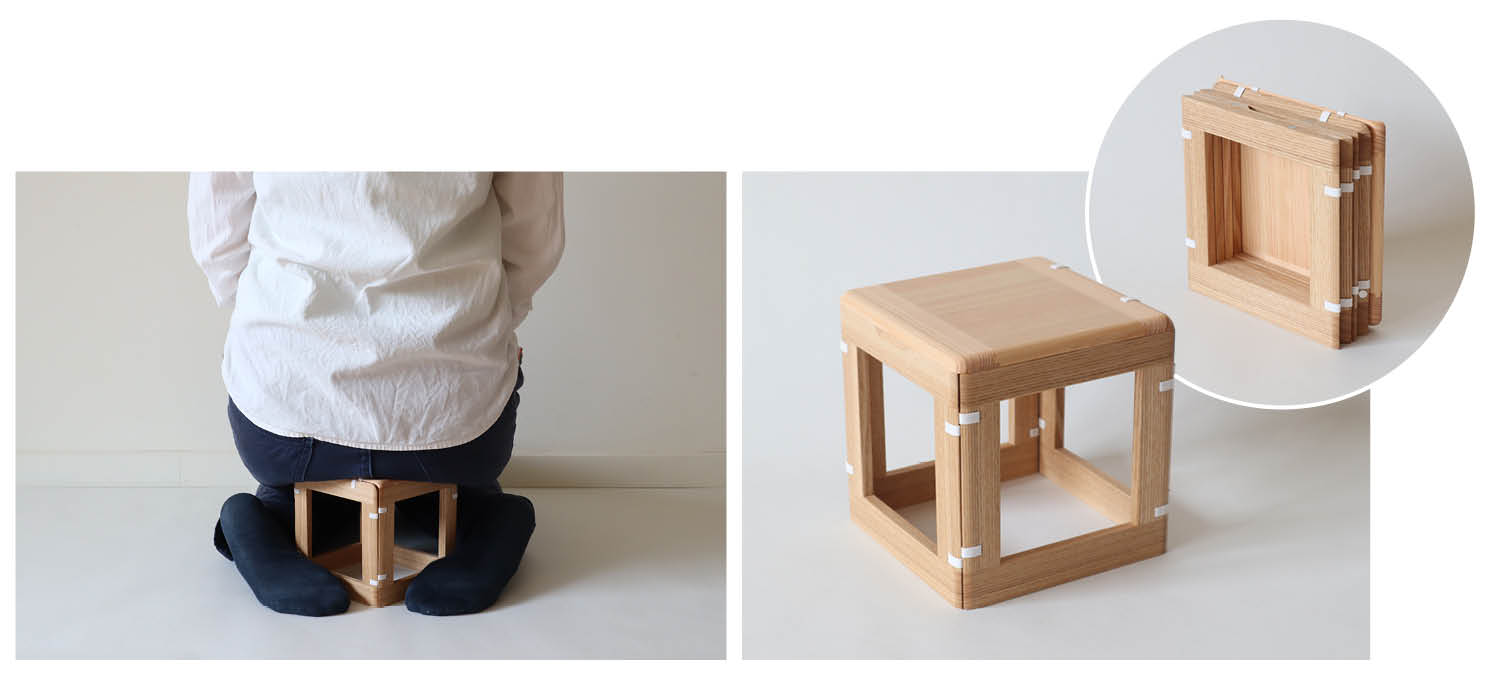
Folding Chair to Assist in Seiza
patol stool SEIZAHirayama Daily Goods Shop, Makiko & Kazuhiko Hirayama
[Critique]
The judges liked this folding chair for assisting seiza sitting, as it’s something that could be put to practical use right away. It’s sure to help people enjoy tatami culture, and will be a big help for people who seldom sit on the floor in this traditional way. The height and size of the chair, as well as its ability to be folded for easy storage, are nice touches. I’d consider this a masterpiece with incredible potential. (Yuji Akimoto)
These pieces of artwork managed to connect traditional Japanese culture with future sensibilities, so give them a look!
-
Hatsune Miku Celebrates 15th Anniversary with Unique Edo Faceted Glass
28.August.2022 | ANIME&GAME / FASHION
To commemorate the 15th anniversary of Hatsune Miku, the PREMICO online store began selling beautiful faceted Edo Glass inspired by the virtual singer on August 17, 2022. Only 390 glasses will be available.
The custom-made blue-green glasses were inspired by the beloved virtual figure. Edo faceted glass is a traditional craft in Japan, and each is a unique work of art. Each piece is handmade by craftsmen at long-established workshops that are members of the Edo Kiriko Cooperate Association.






Delivered in a special paulownia wood box, the Edo faceted glass comes with an acrylic display stand featuring a new illustration of Hatsune Miku by Iwato.


Don’t miss this special Edo faceted glass only available for a limited time!
Art by 岩十 (c) Crypton Future Media, INC. www.piapro.net
Information
Hatsune Miku 15th Anniversary Edo Faceted Glass
Price: ¥39,000 (Tax Included)
Amount Available: 390
Release Date: August 17, 2022
Items will be shipped in early September 2022
Official Site: https://iei.jp/miku-kiriko/
-
Naruto Anime Series Celebrates 20th Anniversary with Traditional Kokeshi Dolls
08.August.2022 | ANIME&GAME / FASHION
To commemorate the 20th anniversary of the Naruto anime series, Usaburo Kokeshi has created two traditional dolls modeled after Naruto Uzumaki and Sasuke Uchiha. The original manga series by Masashi Kishimoto has become a global phenomenon, and fans won’t want to miss out on these unique pieces! Preorders are now open.
Usaburo Kokeshi makes each of these pieces by hand, transforming them from children’s playthings into traditional works of art. The wood used to create these pieces is from trees in Gunma Prefecture.
Usaburo Kokeshi Doll – Naruto Uzumaki

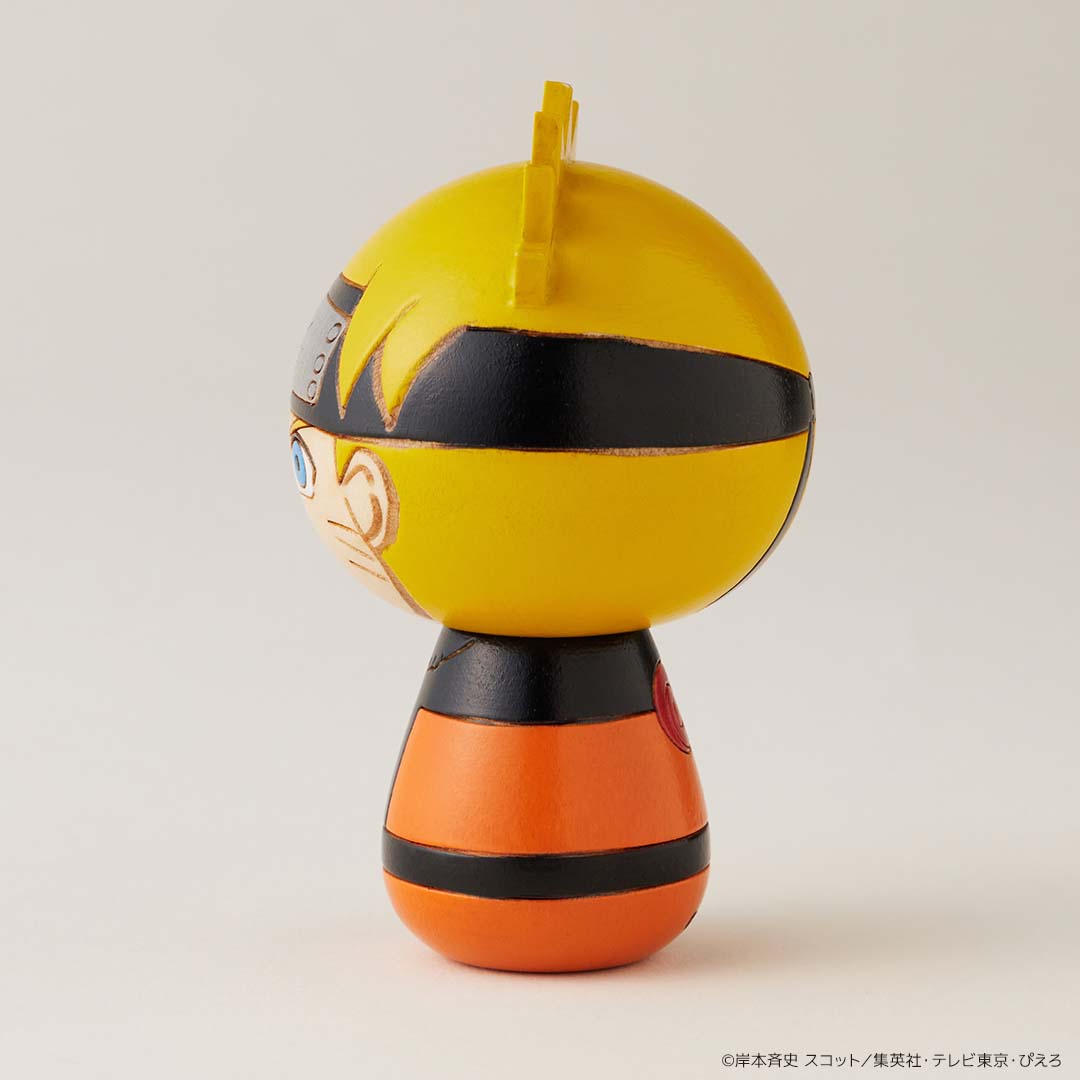

Usaburo Kokeshi Doll – Sasuke Uchiha



These adorable dolls completely recreate both character’s outfits and hairstyles, and the designers clearly focused on the small details. Enjoy these palm-sized versions of your favorite Naruto characters!©岸本斉史 スコット/集英社・テレビ東京・ぴえろ
Information
Naruto Kokeshi Dolls from Usaburo Kokeshi
Details/Preorders: https://tfansite.jp/feature/naruto2207
Orders Open August 3, 2022 at 11:00
Release Date: Late October 2022
-
Creative Social Media Site Behance Promotes Traditional Japanese Culture in New Project
29.June.2022 | FASHION
Behance, the world’s largest creative social media network, has started a new project to promote Japanese traditional culture and arts and crafts to the world. Works on Behance will be transformed into NFTs, with the goal to establish a new way for traditional craftsmen to profit from their work.
Japan’s traditional arts and crafts are well-known by many around the world. On the other hand, challenges still remain as many regions’ traditional manufacturing industries are digitized. Sharing more detailed information about these crafts with overseas markets has also been difficult.
According to the “Survey on the Revitalization of Local Traditional Manufacturing Industries” published by the Development Bank of Japan in 2018, Japan’s traditional arts and crafts industry peaked around 1980. Due to the recession caused by the burst of the bubble economy, the rise of inexpensive foreign products, and changes in lifestyle, the amount of production has been declining year by year. Compared with the peak period, current production has dropped to one-fifth or about 100 billion yen. The workers involved in traditional crafts are also aging, making it difficult to pass on their skills to younger creators.
On Behance, users can not only get inspiration from other people’s work but can also publish their own works and receive helpful feedback and comments. Marketing professionals also use Behance to find creators for campaigns and collaborations, and previously, a Japanese creator who had uploaded his work to the social media site was asked to illustrate the cover of the New York Times.

This project is designed to promote traditional Japanese arts and crafts in the hopes of supporting their continued development in the face of many difficult conditions.
-
Evangelion’s Unit 1 Featured on Limited Edition Edo Faceted Glass at Tsutaya Books Daikanyama
19.June.2022 | ANIME&GAME / FASHION
The first Evangelion-themed Edo faceted glasses were released in November 2021, and Tsutaya Books Daikanyama will soon be selling limited quantities online! These items were previously only available to purchase locally.

Evangelion Unit 1 Edo Faceted Glass: ¥64,900 (Tax Included)
The Evangelion Unit 1 Edo Faceted Glass was designed along with a traditional pattern inspired by chrysanthemums, which symbolize longevity in Japanese culture. While the standard colors of faceted glass are red and blue, the gold and purple colors used in this unique item are extremely difficult to create, with only a few factories capable of producing them.

The glassware is designed and cut by Kosho Nemoto at Nemoto Glass, which has produced the finest Edo faceted glass in Tokyo for three generations. The webpage below also explains how these glasses are produced.

The product is scheduled to be released in late June 2022 and is currently available for pre-order. The amount available is extremely limited, so be sure to order as soon as possible if you’d like to add one of these valuable glasses to your collection.
Information
Evangelion Unit 1 Edo Faceted Glass
Available: Late June *Subject to availability.
Product Details: https://store.tsite.jp/feature/579.html
Tsutaya Books Daikanyama Official Site: https://store.tsite.jp/daikanyama/
-
‘Doraemon: Nobita’s Little Star Wars 2021’ Film Inspires Limited Edition Ukiyo-e Prints
05.April.2022 | ANIME&GAME / FASHION
Fans of Doraemon and traditional Japanese artwork won’t want to miss this special collaboration! On March 30, preorders will open for ukiyo-e prints inspired by the film ‘Doraemon: Nobita’s Little Star Wars 2021.’ These limited-edition pieces were created by Iwano Ichibei, a Living National Treasure.
The prints show Doraemon and friends along with the alien Papi and the special gadget the “Small Light.” The tool is giving off light depicted in a traditional Edo pattern believed to bring good luck, and the characters are shown inside its silhouette.
Ukiyo-e Woodblock Print Production
Engraving by Craftsman
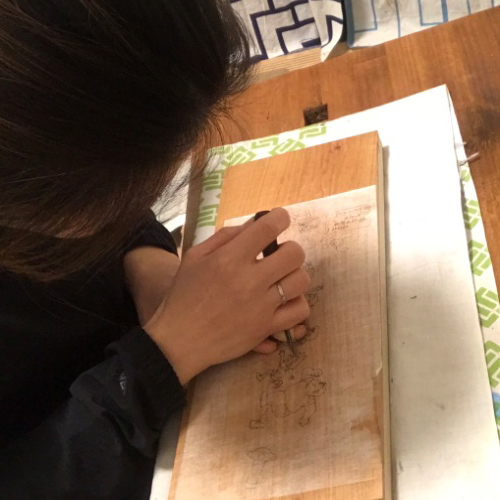

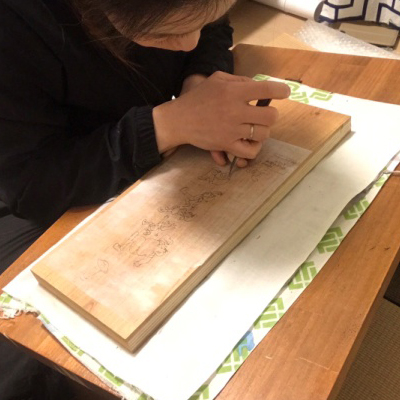
Printing by Craftsman



First, a sketch is made, and a monochrome version of the print is carved. After carving a number of woodblocks for each color and using them to rub the painting tirelessly to bring it to life, one single woodblock print is completed.

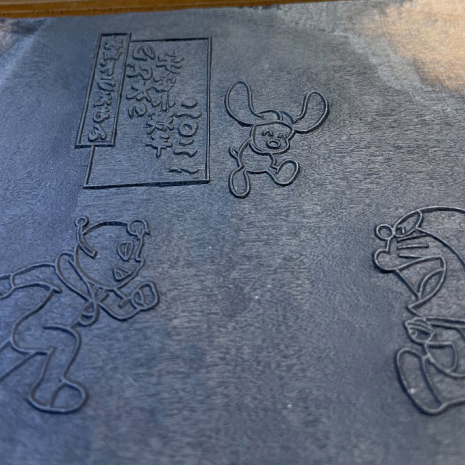
The extremely delicate and advanced techniques these craftsmen utilize have been passed down from the Edo period. Imagine having one of these beautiful pieces hanging in your home!
Information
‘Doraemon: Nobita’s Little Star Wars 2021’ Commemorative Ukiyo-e Prints
Preorders Open: March 30, 2022
Price: ¥33,000 (Excluding Tax and Shipping Charges)Quantity: 300
Painter: Living National Treasure Iwano Ichibei
Online Shop: http://ukiyoework.com/ -
Edo-Tokyo Museum to Hold Exhibition Highlighting the 30,000 Year History of Tokyo
16.September.2021 | SPOT
Tokyo as we know it today is built upon tens of thousands of years of history. The Paleolithic era, during which traces of human life have been found in the Tokyo area, dates back more than 30,000 years. It might be difficult to imagine what life was like so long ago, but ruins discovered during urban development offer a glimpse into the ancient past.
The Edo-Tokyo Museum opened in 1993, and is set to begin a large-scale renovation in April 2022. Prior to the museum’s temporary closure, a special exhibition titled ‘Memories of the City: A Thirty Thousand Year History of Tokyo’ will open from September 18 until December 5, 2021. The installation will look back on the history of Japan’s capital, from the Paleolithic era to the present day.
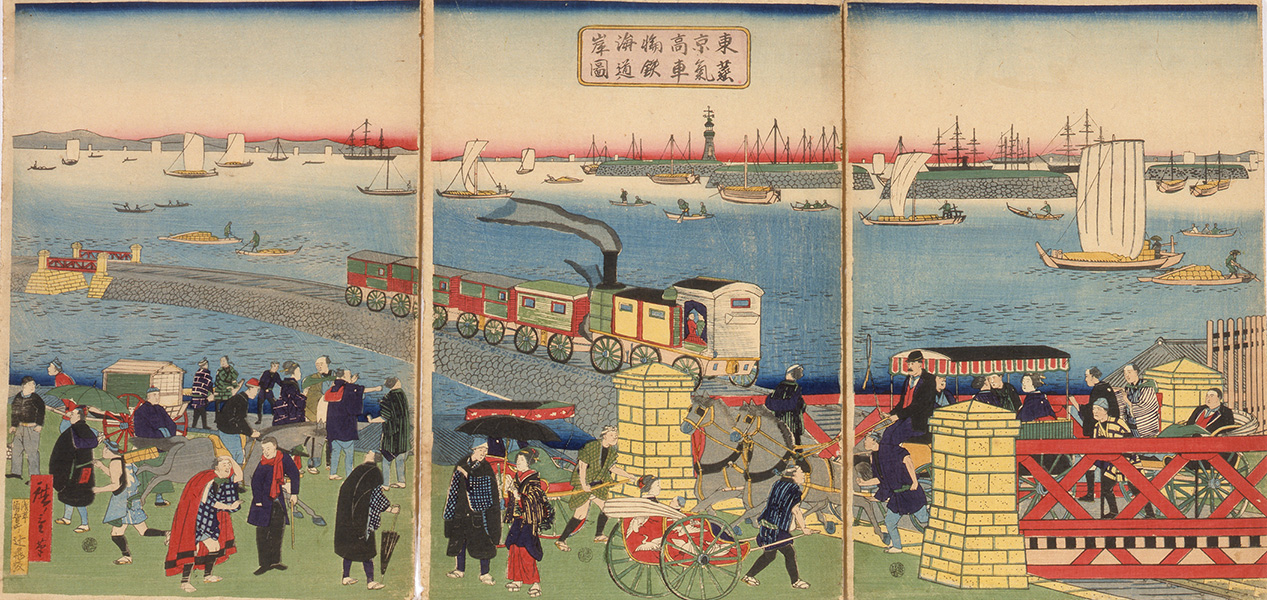
Tokyo Takanawa Coast Steam Railway – Hiroshige Utagawa III. 1871.

Sword-shaped Haniwa. Excavated from Kannonzuka Burial Mound. From the Kofun Period (250-538 CE)

Roof tiles. Excavated from the Site of Musashi Kokubunji Temple. From the Nara Period (710-794 CE)

Scene from Yamabuki no Sato by Ota Dokan. Saitou Yukio, Saitou Yukitaka, Saitou Gesshin, Hasegawa Settan. 1836.

Excavated Materials from Hachioji Castle Ruins. From the Azuchi-Momoyama Period (1558-1600 CE)

Map of Edo. 1666.
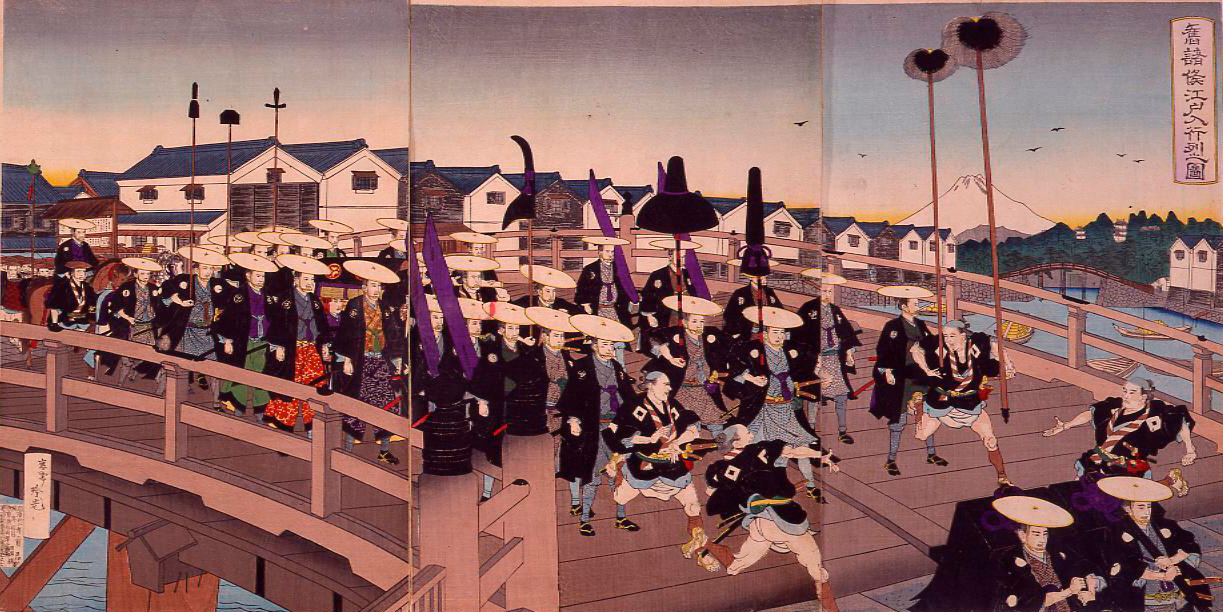
Procession of the Lords of Edo. Adachi Ginko. 1889.

Washington Heights (Tokyo Aerial Photograph). Satou Suiyou. 1957.
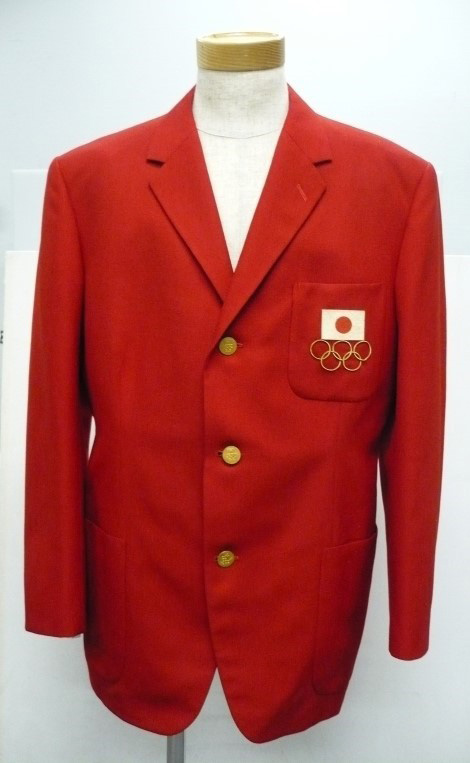
Blazer worn by the Japanese Delegation at Tokyo Olympic Games. 1964.
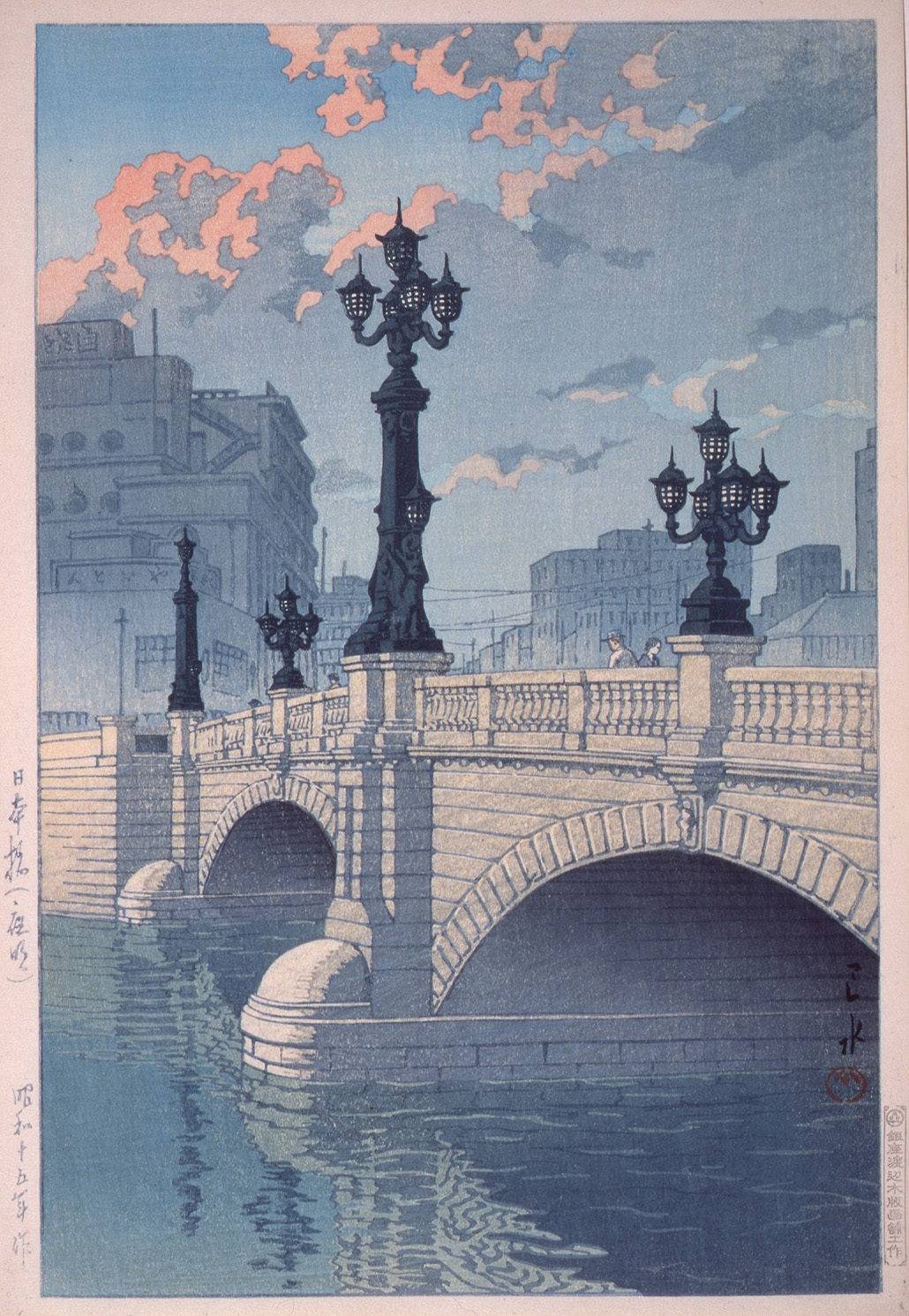
Nipponbashi at Dawn. Kawase Hasui. 1940.
As urban development continues to progress, it’s incredible to look back at the many people who have lived in the Tokyo area, and the many events that have taken place over time. Recently, a new train stop was added to the busy Yamanote Line in the capital, and the remains of an old railroad track were discovered during construction! What else might be hiding beneath the metropolis?
Tokyo has undergone constant change due to natural disasters, war, and urban development, but historical buildings and important spots that tell the story of the city are being carefully preserved for future generations. Visitors to Japan often comment on this, claiming that so much of Tokyo’s beauty comes from it’s blend of old and new.
Information
Memories of the City: A Thirty Thousand Year History of Tokyo
Running: September 18 – December 5, 2021
Hours: 9:30AM-5:30PM (Closed Mondays, with exception of September 20. Closed September 21.)
Address: Edo-Tokyo Museum, Permanent Exhibition, 5th Floor Feature Exhibition Room (1-4-1 Yokoami, Sumida-ku, Tokyo)
Official Site: http://www.edo-tokyo-museum.or.jp/
-
Results of First Japanese Traditional Culture Grand Prix Announced
09.September.2021 | FASHION / Uncategorized
With 130 entries submitted from all parts of Japan, the 8 winners of the first Japanese Traditional Culture Grand Prix have finally been announced. The contest was spearheaded by the Japan Traditional Culture Promotion Project, established in May 2020 as a collaborative effort among companies, associations, and local governments to establish a sustainable framework for the continued development of Japanese traditional culture.

Grand Prix Winner: Nakagawa Woodcrafts Hira Studio “Wave” series (left) “YORISIRO” series (right)
The winner of the top prize was Nakagawa Woodcrafts Hira Studio, in which the craftsmen still use a 700-year-old technique to create their famous wooden buckets. These buckets, once used for storing rice and miso, are still used today for a variety of different purposes, from bathing to cooling champagne! In stepping away from their typical works, the Nakagawa Woodcrafts studio created the more freeform “Wave” series, and the name surely fits–each bucket looks too free to have been manmade. The “YORISIRO” series, rather, keeps the natural curvature of the wood. Both are signature pieces of traditional Japanese artisanal culture.
Runner-up: Cubism in Calligraphy “Natural Stance,” Atelier Sisyu, Sisyu

Excellent Award: Kyo Braided Cords Sanjiku-Kumiori “Kujaku Kouki,” Saiko Ltd., Koichiro Murokado
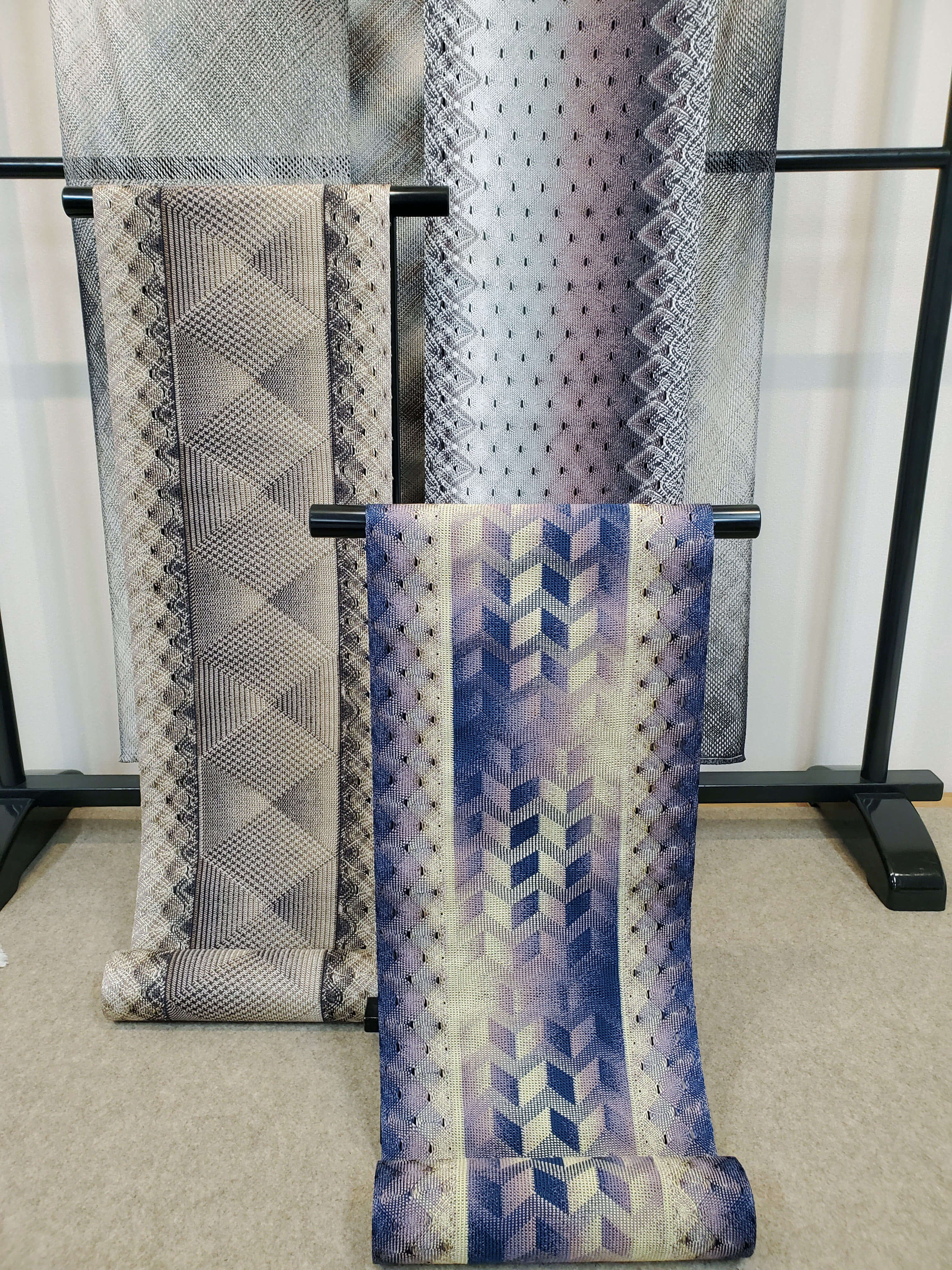
Excellent Award: Structured System “Kumiko Endurance Wall,” Tosa Kumiko Co., Daisuke Iwamoto

Excellence Award: Porcelain “Yuragi” Hiroshi Taruta

Excellence Award: Lacquer Art “Tataeru” Shinsuke Aoki.

Excellent Student Award: Picture Frame “KOZAI” Ryohei Nomura.

Special Award: Rinku, a group of young female craftswomen from the Toukai region

The Japan Traditional Culture Promotion Project began this contest as a way to honor outstanding works from creators around Japan. The jury consists of 18 people from various fields, including Richard Collasse, the Chairman of Chanel LLC, and popular model Kozue Akimoto. A collection of online presentations and interviews with the winners is planned in future events, and the project aims to help these artists continue to work sustainably. The second round of applications will open in November 2021.
Information
Japanese Traditional Culture Grand Prix
Special Winners Site: https://byemotion.jp/collections/f00005
Official Site: https://jcpp.jp/
-
renacnatta x Shiki Theatre Company to Release Banshu-Ori Weave Collection
21.July.2021 | FASHION
renacnatta has teamed up with Shiki Theatre Company to release a collection of banshu-ori skirts and neckties, all of which will arrive on August 3.
renacnatta is a brand which weaves clothes using deadstock fabric from Japan and Italy and by using traditional Japanese weaving techniques.
Skirts

Banshu Mermaid Wrap Skirt – Matinee|Collaboration with Shiki Theatre Company | ¥35,200 (Tax Included)
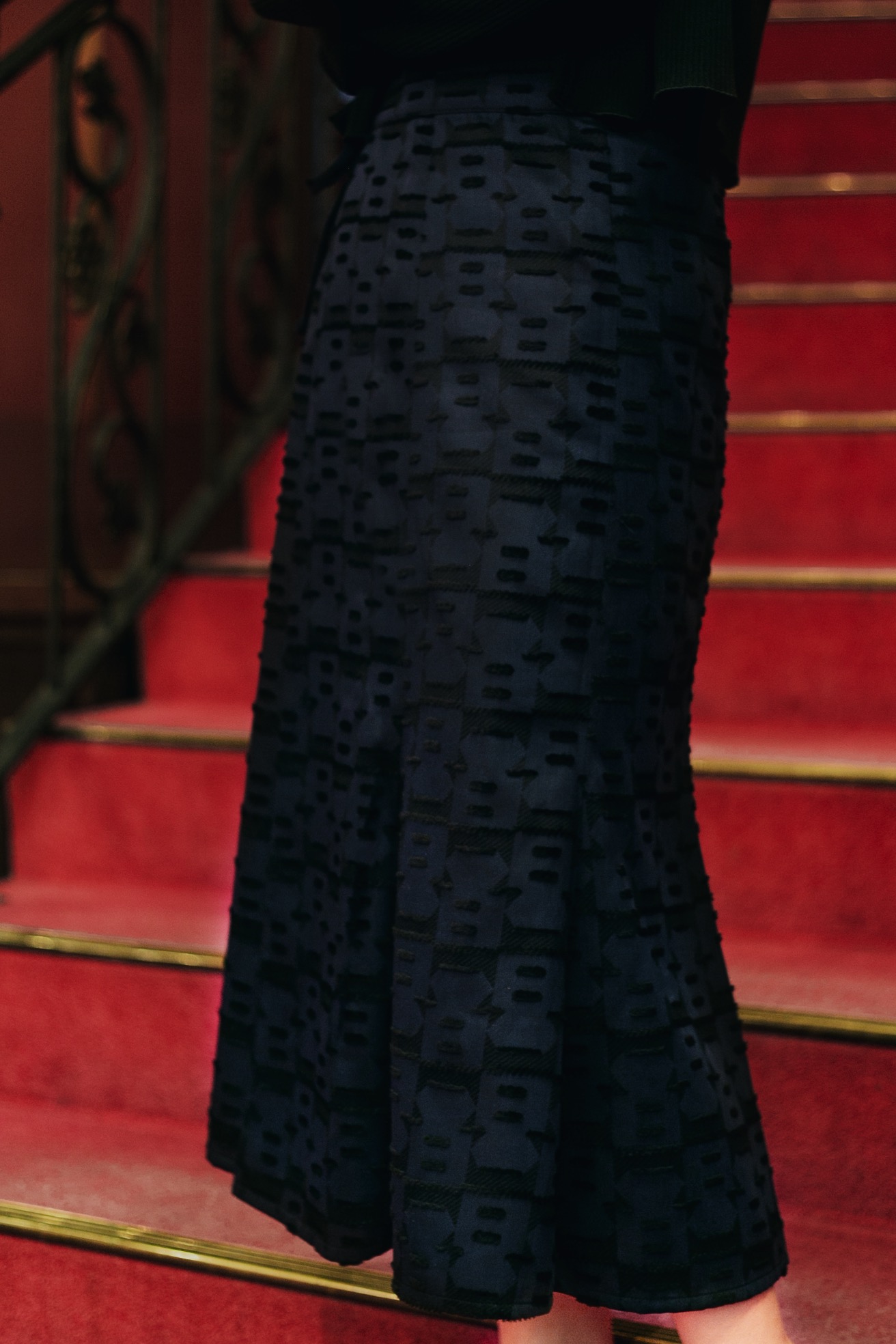
Banshu Mermaid Wrap Skirt – Soiree|Collaboration with Shiki Theatre Company | ¥35,200 (Tax Included)
Neckties

Banshu Tie – Matinee|Collaboration with Shiki Theatre Company | ¥9,350 (Tax Included)

Banshu Tie – Soiree|Collaboration with Shiki Theatre Company | ¥9,350 (Tax Included)
Shows at the Shiki Theatre Company have been cancelled or postponed due to COVID-19. The collaboration comes to reignite the fire and excitement towards the theatre in these restrictive times. This August, the theatre is release a new and original musical which will see actors wearing clothing made using banshu-ori weave. This collection uses the same weaving technique.
Banshuori is a yarn-dyed textile made using a special production method which sees yarn dyed in advance and patterns woven by the dyed yarn. The items in the collection come in two colours: Matinee and Soiree, named after afternoon and evening theatre performances respectively. The Matinee line-up is beige and yellow while the Soiree picks are a mix of navy and black.
The one-size-fits-all skirts feature a comfy mermaid style with a fashionable silhouette perfect for going to the theatre with. They are made in such a way that they do not wrinkle when sitting down for long periods of time. The neckties too are made using banshu-ori weave for a smooth, sleek look.
Information
renacnatta x Shiki Theatre Company
Release Date: August 3, 2021 @ 21:00 (JST)
Buy Here: https://www.renacnatta.com/ -
These Bangles Are Made From Edo Kiriko Cut Glass Bottles
06.July.2021 | FASHION
GLASS-LAB released their new GLASS-LAB NEW PRODUCT “WA” collection of bangles made from Edo Kiriko cut glass bottles on their official website on July 1.

GLASS-LAB NEW PRODUCT “WA” Sustainable Clear | ¥18,370 (Tax Included)

GLASS-LAB NEW PRODUCT “WA” Sustainable Black | ¥18,370 (Tax Included)

GLASS-LAB NEW PRODUCT “WA” Sustainable White | ¥18,370 (Tax Included)
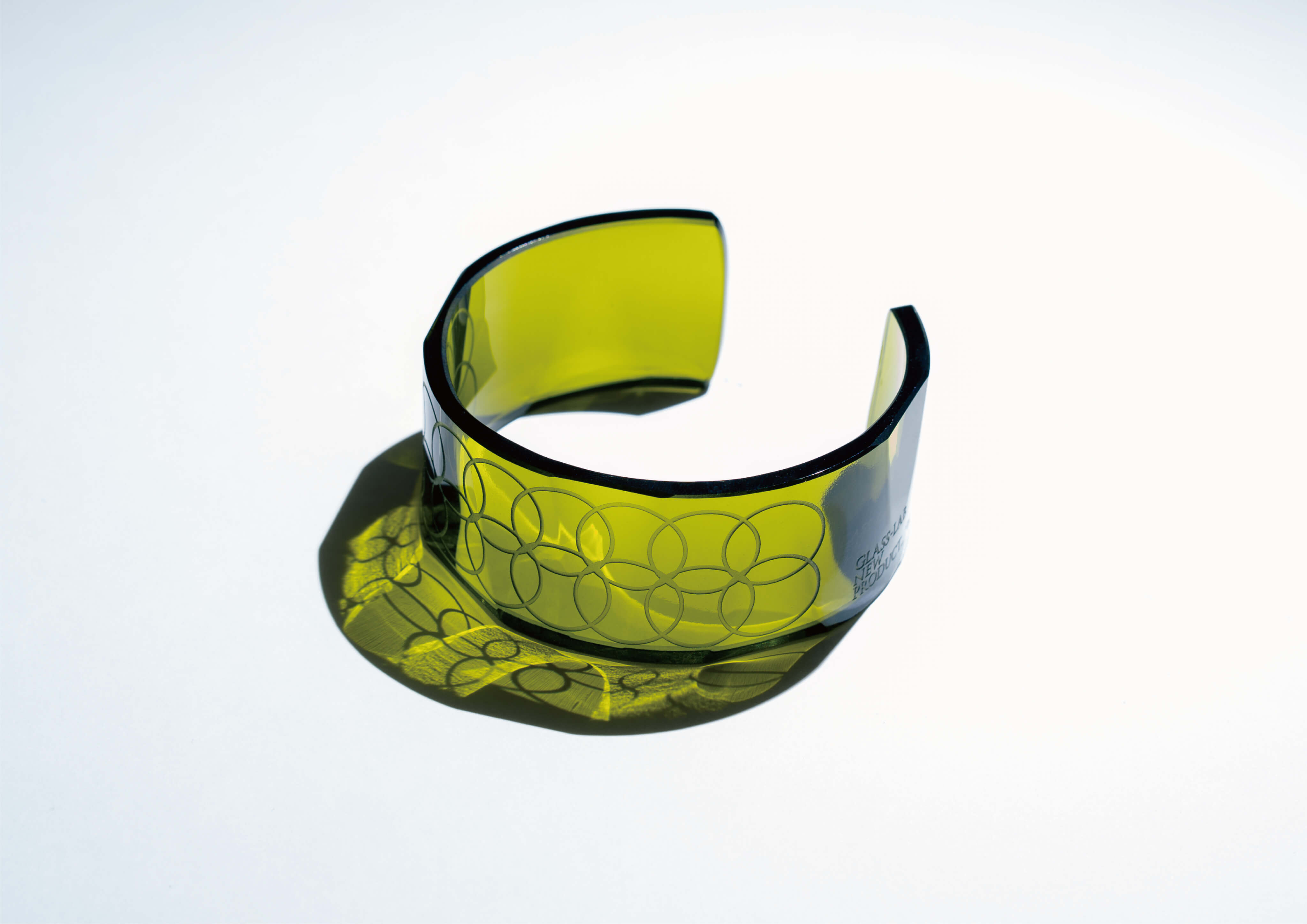
GLASS-LAB NEW PRODUCT “WA” Sustainable Green | ¥18,370 (Tax Included)
GLASS-LAB was opened by the Shiina family in 1950 in Koto, a city known for the production of Edo Kiriko, a traditional type of Japanese glassware. The owner eventually passed the factory onto his sons. It is now run by Takayuki Shiina who is highly skilled at sandblasting, so much so he can cut glass to a fine 0.09mm.
This new collection was made in collaboration with designer Yukio Fujita of ‘design shop YU.’


Information
GLASS-LAB NEW PRODUCT “WA”
Released: July 1, 2021
Buy Here: https://glasslab.official.ec/
-
Shu Uemura Releases Sustainable ‘Mindfully Crafted in Japan’ Collection
09.June.2021 | FASHION
Japanese cosmetic brand Shu Uemura is set to release its new origami-inspired ‘mindfully crafted in japan’ collection on June 18, but presales opened on their online shop last Tuesday. The collection is a display of Japanese tradition and craftsmanship with sustainability at the core of its concept.

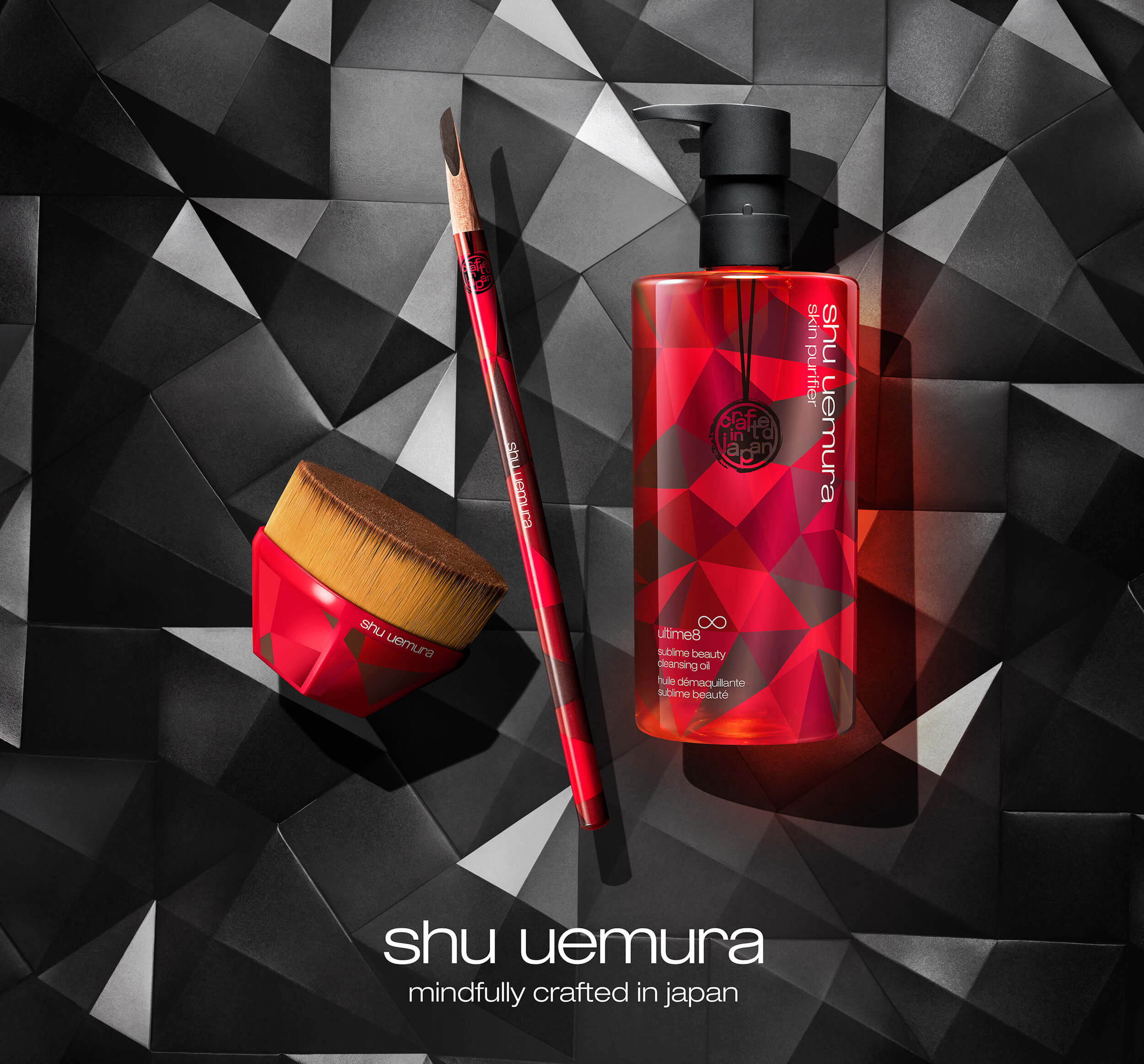

ultime8 ∞ sublime beauty cleansing oil (Limited Edition Design) | ¥12,650 (Tax Included)

hard formula hard 9 (seal brown 02) (Limited Edition Design) | ¥2,860 (Tax Included)
 petal 55 foundation brush (Limited Edition Design) | ¥6,600 (Tax Included)
petal 55 foundation brush (Limited Edition Design) | ¥6,600 (Tax Included)The collection focuses on three aspects of mindfulness with Japan as its focus: mindful of Japanese nature with locally and sustainably resourced ingredients, mindful of Japanese resources by taking only what is needed, and mindful of Japanese traditional craftsmanship by preserving traditions from the past.
Shu Uemura’s Cleansing Oil is one of the brand’s most notable sustainable products, preserving everything important about Japanese culture from its history to its natural environment. Using traditional methods passed down the ages, the product is made from plant-derived ingredients sourced sustainably, and the packaging is made from 100% recyclable plastic. The Cleansing Oil bottles were also added to Shu Uemura’s new recycling program which began on May 5 which enables bottles to be reused.Don’t miss out on this special new collection by Shu Uemura.
Information
mindfully crafted in japan collection
Release Date: June 18, 2021
Available: shu tokyo makeup box
Address: B-SIDE 5-11-2 Jingumae, Shibuya, Tokyo, 150-0001
Pre-Sale: Online from June 1, 2021
Official Online Shop: https://www.shuuemura.jp
-
Sonny Angel Doll Series Releases Japanese Good Luck Collection
03.June.2021 | FASHION
The new Sonny Angel Japanese Good Luck Series was released on May 27, the same month when the popular doll series reached its 17th anniversary milestone. The series sees Sonny Angel wearing a range of traditional Japanese lucky charms to deliver healing and happiness to people.


The Line-Up

A Lucky Cat with a cute bell on his neck. His raised left hand/paw will bring you good luck.

A hat depicting Mount Fuji, a symbol of Japan. Pine, bamboo and plum leaves are illustrated on the folding fan.

Daruma are brightly coloured hollow dolls decorating houses in Japan so that our wishes will come true.

The Raccoon Dog has a long history as a strange, even supernatural animal and is known to be a shape shifter.

A Guardian Dog is thought to ward off evil spirits. This one is decorated in a houndstooth pattern, also known to be a sign of good luck.
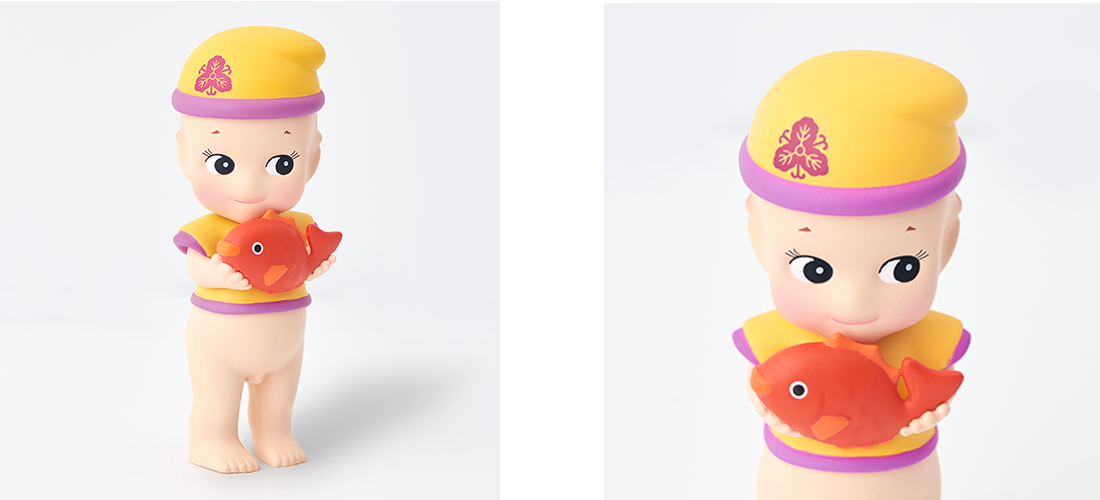
Ebisuten is the god of “prosperous business”. The sea bream in his hand, a fish often served on New Year’s Day and at weddings, is a symbol of “congratulations”.

The packaging

Gift bag
The packaging features a mikuhiki design. A mizuhiki is a decorative cord made from twisted paper. If you purchase four or more dolls as part of this series on Sonny Angel’s online store, you’ll also receive a free gift bag.
Information
Sonny Angel Japanese Good Luck Series
Released: May 27, 2021
Price: ¥850 (Tax Included)
Product Page (English): https://www.sonnyangel.com/en/2021/05/07/japanese-goodluck/
Buy Online: https://www.sonnyangelstore.com/products/japanesegoodluck













